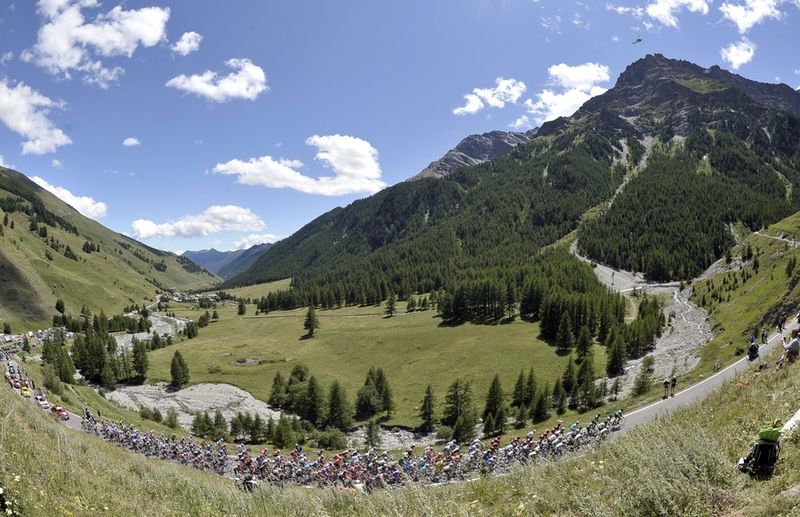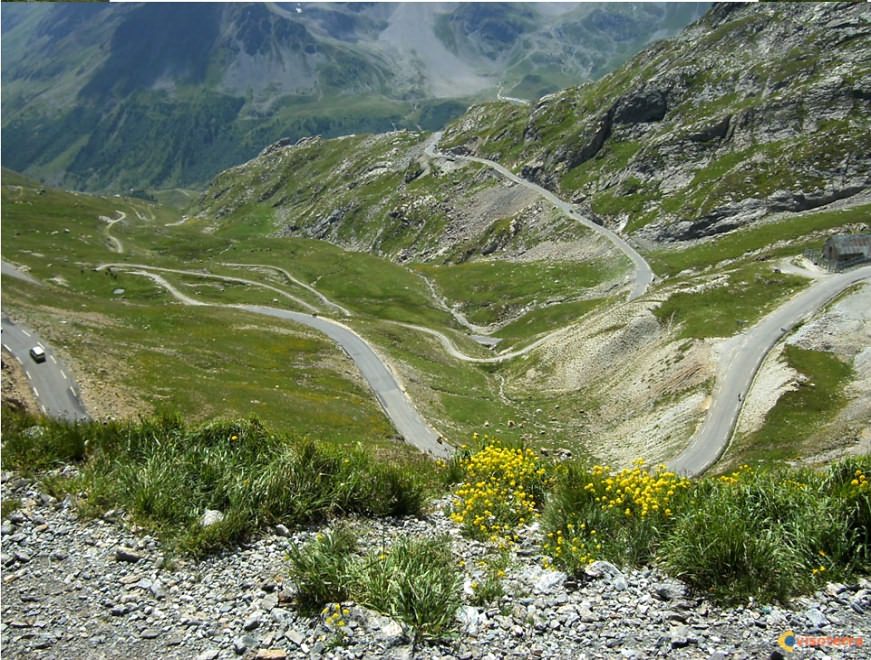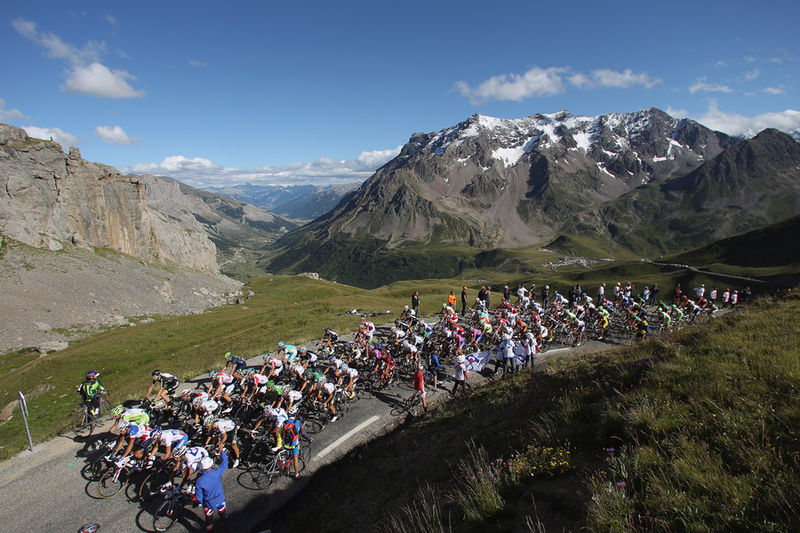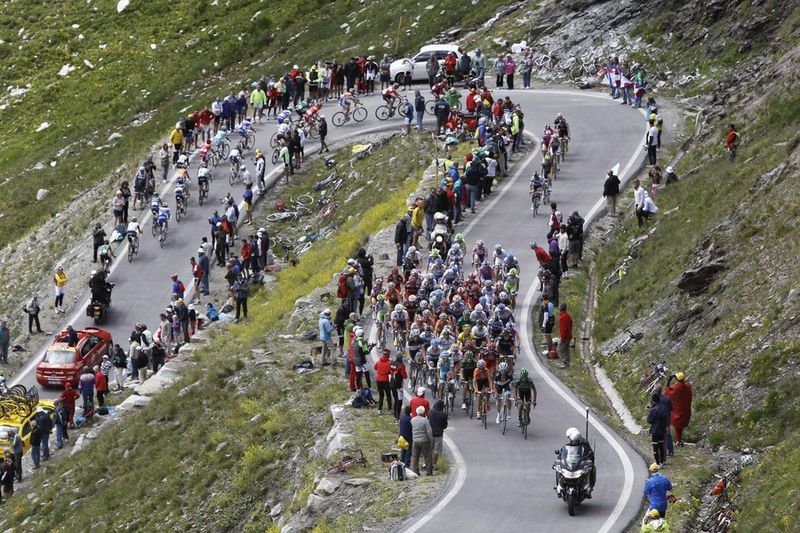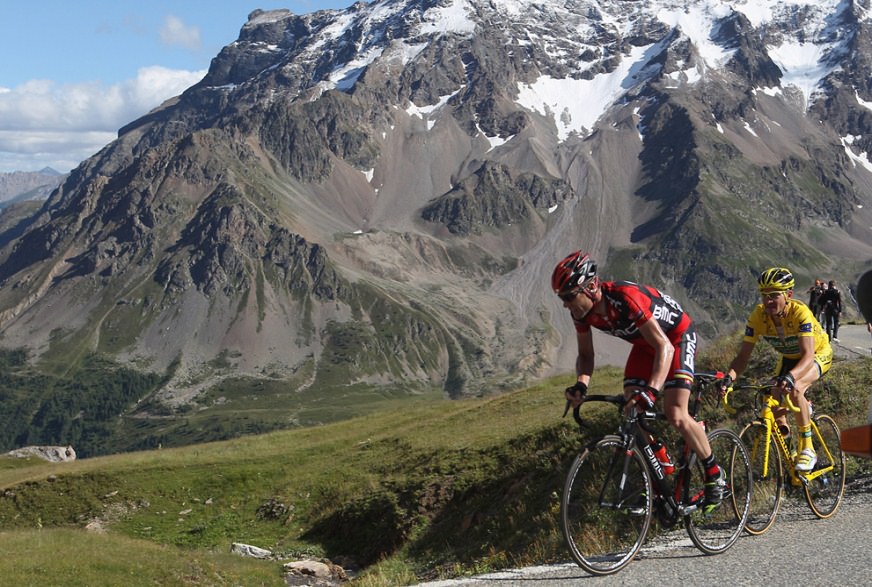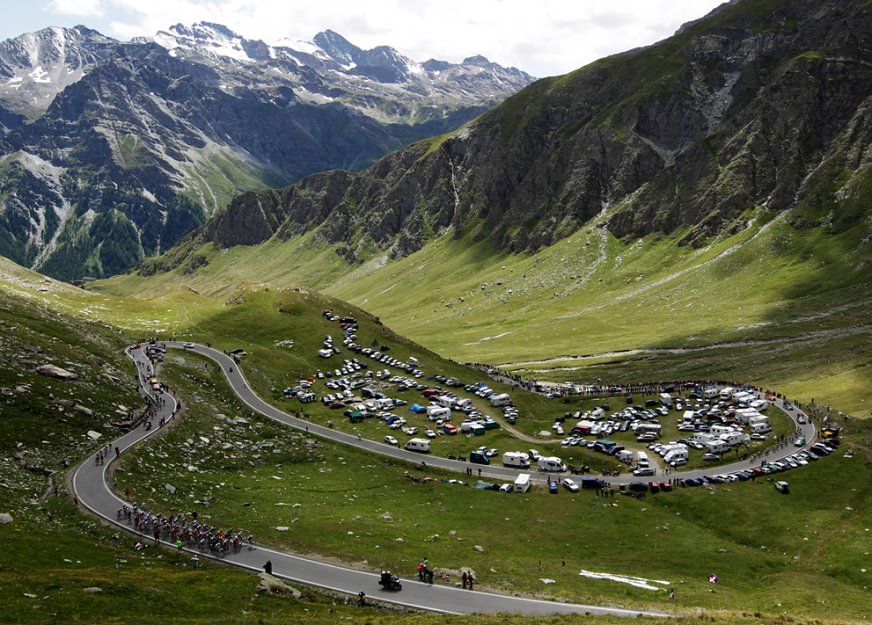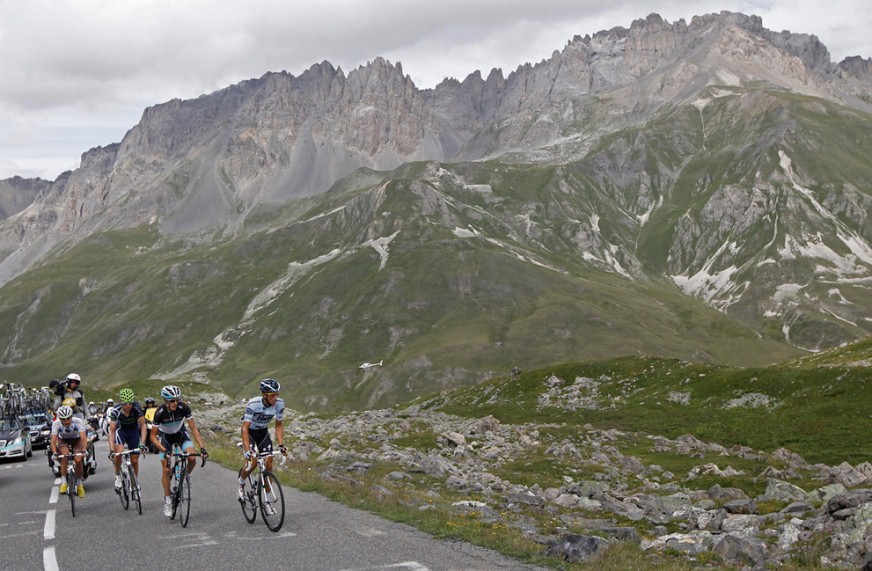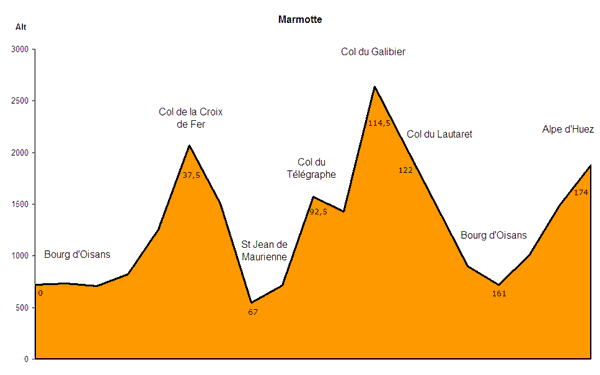The summit is a bleak, windswept spot, a remote world of silence. At 2,646 metres above sea level, the only sound is a thin and sometimes freezing wind and the only colour is the sun-bleached and washed-out grey of the rocky scree between the hairpins. In the distance, massive jagged peaks in a 360-degree Alpine panorama.



Down the mountain, a film of thin grass gives the lower slopes a veneer of life. This is the Col du Galibier.
She done it, and she ain't half proud of it.



